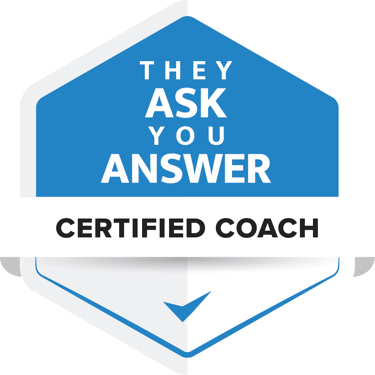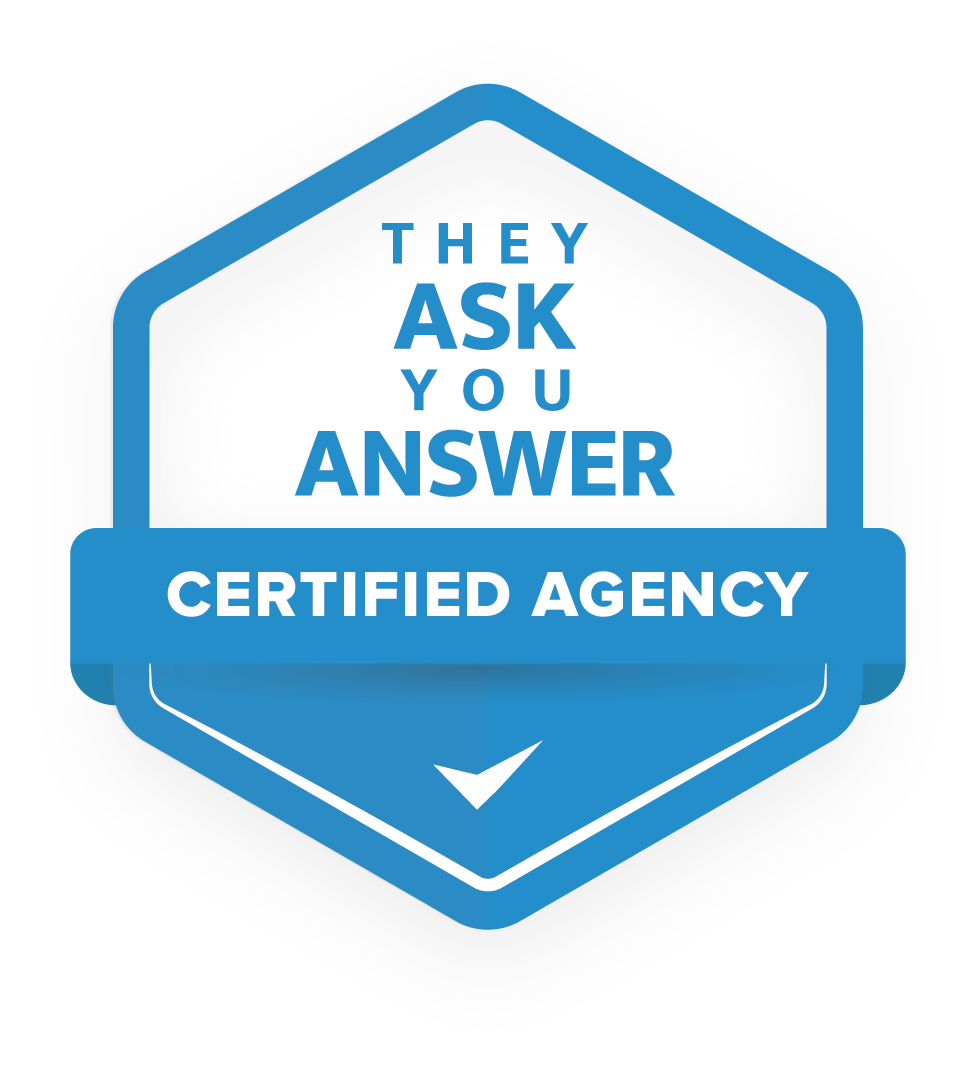The Big 5: How to create compelling 'issues' content in 3 steps (+ examples)

If you've just started They Ask, You Answer, it can be quite exciting to write your first issues article. Especially if you're used to writing about the benefits of your product, it can feel counterintuitive to now suddenly have to talk about the drawbacks.
Won't your boss get angry?
Aren't you chasing away potential customers?
Why on earth would you want to draw attention to your product's shortcomings?
Rationally, you know why you should create this kind of content, but just silence that naysaying little voice in your head!
As a content manager at Buzzlytics, I know how you feel. I've written several issue articles, both for Buzzlytics and for multiple employers, which I sometimes showed to my boss with sweat in my hands. Fortunately, I've also since experienced how powerful this type of content can be in building trust with your target audience.
In this article I will explain to you why it is important to write problem articles and how to go about it. After reading this article, you will know exactly how to write a problem article that appeals to your target audience and shows that you are the expert who can help them move forward.
Companies that create "issues" content gain the trust of their target audience, generate more leads and ultimately attract more customers.
Why it is important to be open about problems, drawbacks and shortcomings
At Buzzlytics, we regularly get the question, "Why draw attention to our shortcomings? Surely that only deters potential customers?"
Our counter question then is: would you rather a potential customer hear about a problem with your product or service from you, or discover it for himself? Or even worse: that he hears about it from a competitor?
By creating content about the problems and drawbacks of your product or service, you are ahead of the unpleasant surprises that can lead to bad customer experiences, negative reviews and negative word of mouth.
It immediately creates clarity and realistic expectations in potential buyers. It allows them to decide for themselves whether your solution suits them or not.
And perhaps most importantly, companies that create this type of content gain the trust of their target audience, generate more leads and ultimately attract more customers.
That's why "problems" is one of the Big 5 topics Marcus Sheridan writes about in his book They Ask, You Answer. The Big 5 are the five topics that generate the most traffic, the most leads and the most sales for companies that are successful with inbound marketing.
3 steps for writing good 'issues' content
So much for the theory, how do you actually tackle writing good content about the problems, drawbacks and shortcomings of your products or services? Here are the three steps we teach our clients:
Step 1: Identify the problems of your product or service
There is no one product or service that is the right solution for everyone. You will be much more successful if you simply admit this to your potential buyers and show that there may indeed be drawbacks to the solution you offer.
So what problems are worth naming?
A simple way to find out is to ask yourself if the problem will affect your customer's overall experience with your product or service.
For example:
- Could it result in him not achieving his intended goal?
- Could it lead to him spending more money?
- Could it harm him rather than help him?
- Is it something that could lead to him writing a negative review?
If the answer to any of these questions is "yes," then you had better name this problem in your content.
There is no one product or service that is the right solution for everyone.
Step 2: Choose the right angle
There are several ways you can create content about problems and drawbacks. The good news for content creators is that you can vary angles and formats. Consider, for example:
- "The top X problems with Y"
- "The X problems with Y that you probably overlook"
- "The most common problems beginners experience - and how to avoid them"
- "Why X doesn't work and what you can do about it."
- "The X reasons why Y fails"
- "X reasons why Y is not the right choice for you."
All of these angles have the same goal: to be open and honest about the experience someone will have with your product or service.
Examples:
Step 3: Demonstrate a solution
Sometimes naming a problem will deter a buyer. You can then get one step closer to a new customer if you show how you solve the problem.
You want to be humble enough to make yourself vulnerable, but you also want to show that you have the authority and knowledge to solve shortcomings.
Topics such as "X challenges and how to avoid them" put the solutions front and center. This makes it easy for a potential client to see that you know what you are talking about and that you can help them address these problems when they encounter them.
Example:
In many cases, a potential buyer doesn't even know they have a problem that you can solve.
What to do about buyer and competitor problems?
When we talk about "problems" articles in the context of the Big 5, we are only talking about problems related to your company's offerings or industry.
But this doesn't mean you shouldn't talk about problems with your competitors or other issues your buyers are facing. In fact, these are great topics to build awareness for your business and inform your target audience.
Put yourself in your buyer's position. Then list the problems he has that would lead him to seek the solution from you.
In many cases, he doesn't even know he has a problem that you can solve. It's up to you to recognize his symptoms, identify the problem and outline available options.
Honesty pays off: move toward transparent content
Writing a problems article doesn't have to be complicated or scary. By following the three steps we discussed in this article - identifying your problems, choosing the right angle and showing solutions - you can create effective content that resonates with your target audience.
Remember why you're doing this: your potential customers are looking for honest, reliable information on which to base their purchasing decision. By being open about the drawbacks and limitations of your product or service, you position yourself as a reliable authority in your field.
At Buzzlytics, we have already helped several companies implement They Ask, You Answer, including writing issue articles. Time and again, we see companies that embrace this approach gain the trust of their target audience and achieve better results.
Curious about how to write the other Big 5 articles? Then also read:
Related articles
January 30, 2025
-
Reading time: +/- 10 min
October 31, 2024
-
Reading time: +/- 10 min
March 25, 2024
-
Reading time: +/- 7 min
April 30, 2024
-
Reading time: +/- 11 min








